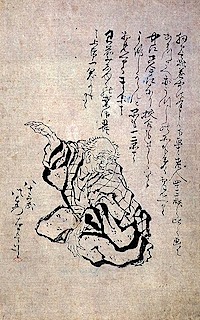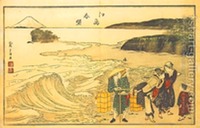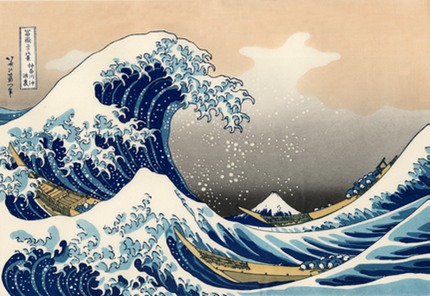hokusai the great wave of kanagawa 1831
The Siebold House in Leyden (the Netherlands) is an agreeable place to deepen your understanding of Japanese culture and history. One of the (temporary) attractions of the House is the exhibition of a collection of woodblock prints made by Katsushika Hokusai 1760 - 1849. Together with Hiroshige, Hokusai belongs to the most outstanding ukiyo-e artists of Japan. Everybody knows his best-known print: The Great Wave (see above). Hokusai's career as an artist started slowly in the shadow of leading artists of his school.
In his late thirties he changed the style of his designs and subjectmatters and became an independent artist with his own students. In 1798 he definitely changed his name into Hokusai. In 1797 he made his first version of The Wave (see left). It is almost certain that the design of the wave is inspired by an oilpainting made in 1796 by Shiba Kokan (see left) . Shiba Kokan played at that time an important role in promoting Western drawing and oil-painting techniques he learned from the Dutch. Both artists lived in Tokyo and It is quite possible that Hokusai had contact with Kokan or even took lessons from him.
Hokusai definitely established his fame as an independent artist with two series of landscape prints between 1800 - 1805. These series included other versions of the Wave (see left under). The prints were clearly influenced by Western techniques like Western linear perspective and shading and a lower horizon. In this respect Hokusai's prints were at that time a major innovation in the tradition of Japanese ukiyo-e.
Around 1830 Hokusai started the famous series of Thirty-six Views of Mount Fuji. One of these prints is the well known version of the Great Wave (see above). Unlike his earlier westernized landscape prints in this series Hokusai found a perfect balance between Japanese tradition and Western influence.




